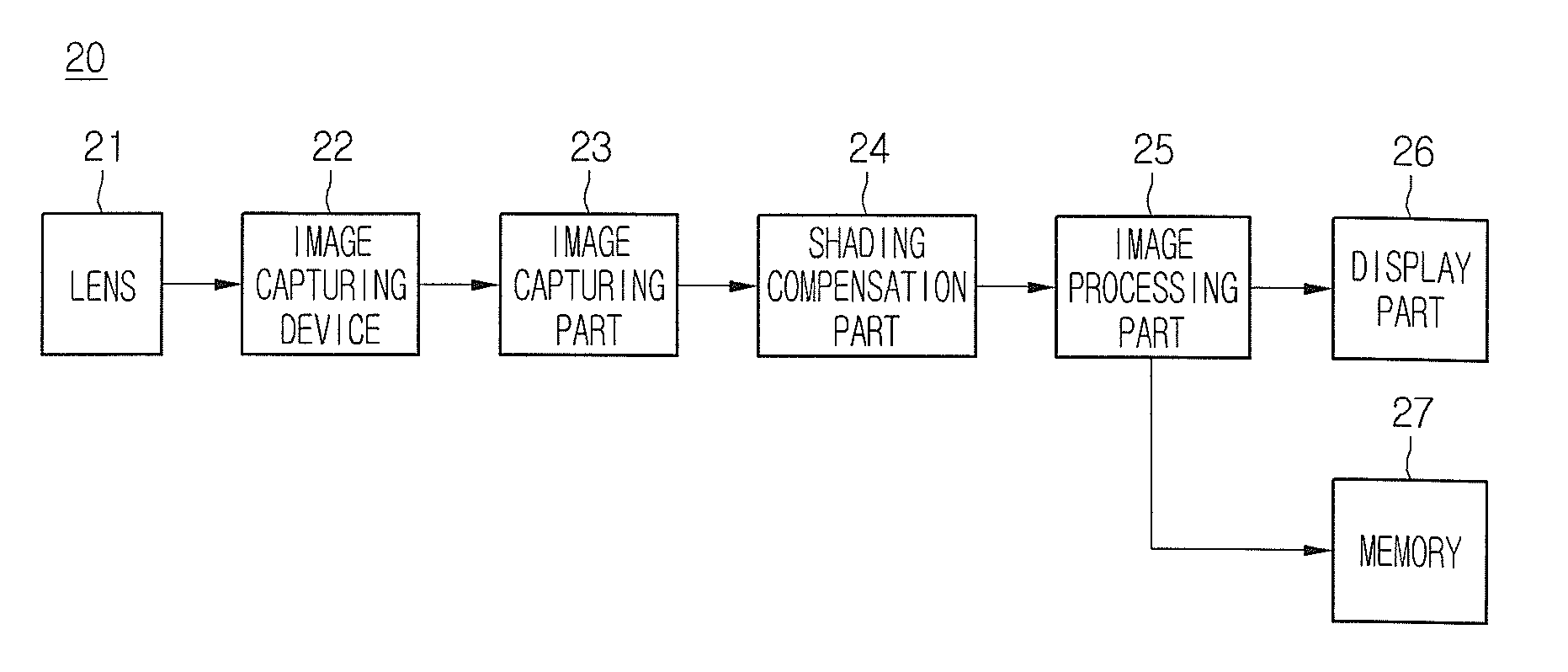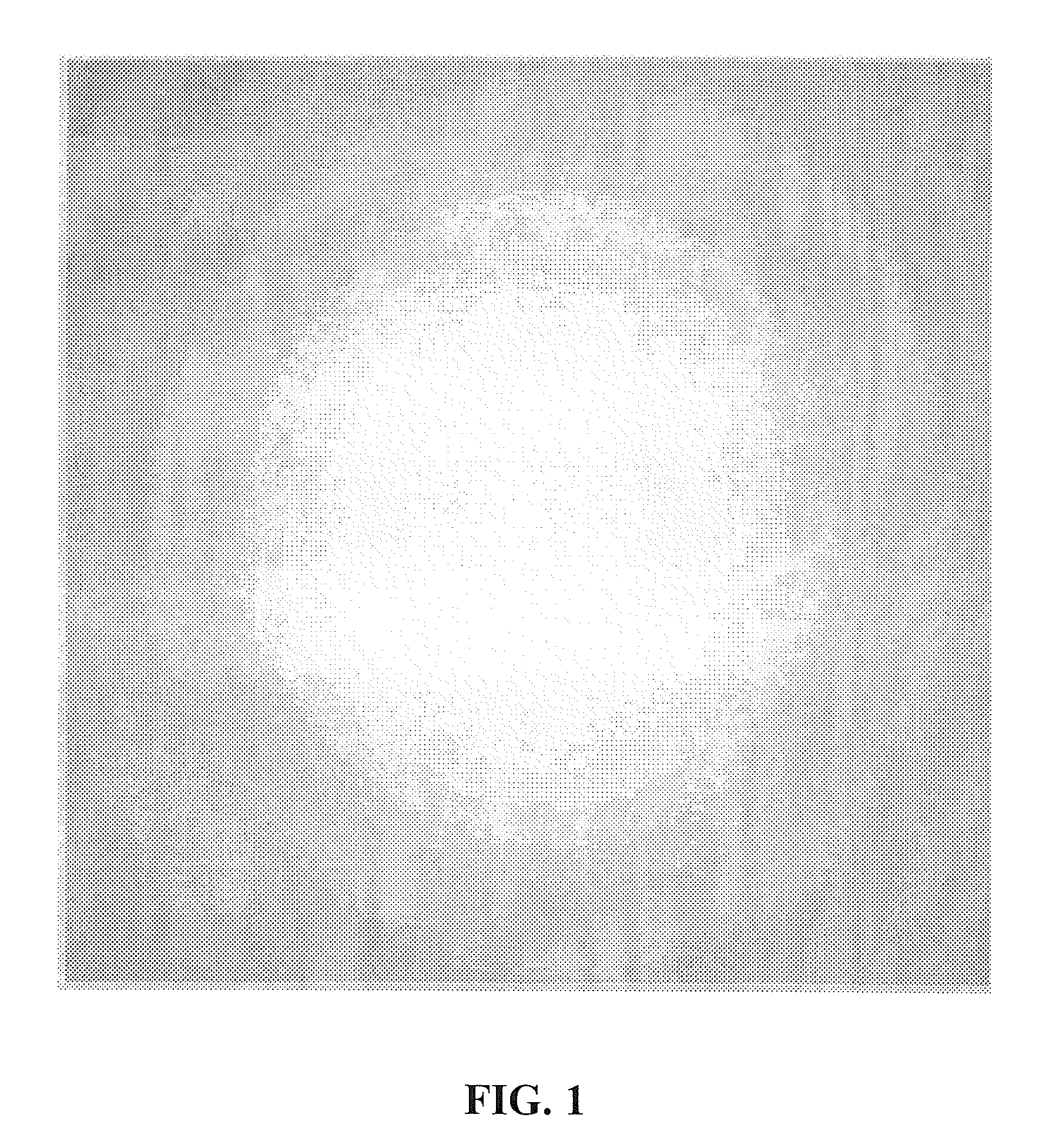Method of calculating lens shading compensation factor and method and apparatus for compensating for lens shading by using the method
a compensation factor and lens shading technology, applied in the field of compensating for lens shading, can solve the problems of large amount of memory and large amount of memory, and achieve the effect of improving the compensation performan
- Summary
- Abstract
- Description
- Claims
- Application Information
AI Technical Summary
Benefits of technology
Problems solved by technology
Method used
Image
Examples
first embodiment
[0040]According to a first embodiment, a method of compensating for the characteristic of the lens shading that an image decreases in brightness from the center thereof to the periphery thereof will now be described.
[0041]A reference image such as the image as illustrated in FIG. 1, which decreases in brightness from the center thereof to the periphery thereof, may be divided into N sectors that have circular belt shapes with the same center and different radii, as illustrated in FIG. 3. Each sector may be a group of pixels having similar pixel values. For example, when pixel values range from 0 to 255, differences between pixel values of pixels constituting each sector may be 5 or less.
[0042]Then, the maximum one of the pixel values of the reference image, and a mean pixel value of each sector are determined. At this point, the pixel having the maximum value is located in the center of the reference image.
[0043]A compensation factor F1 of each sector having a circular belt shape ma...
second embodiment
[0059]The first embodiment is adapted to the case that a reference image decreases in brightness from the center thereof to the periphery thereof, but is not adapted to the case that pixel values are irregularly distributed. A second embodiment is adapted even to the case that a reference image is asymmetric, and pixel values are irregularly distributed. The second embodiment is different from the first embodiment after a reference image is divided into images according to color channels.
[0060]The reference image is assumed to have a distribution as illustrated in FIG. 8. Like in the FIG. 4, the reference image is placed on the x-y plane, and the z-value denotes a brightness value of each pixel. Referring to FIG. 8, the center of the reference image is not brighter than the others, and the reference image does not gradually decrease in brightness from the center thereof to the periphery thereof and has no specific pattern.
[0061]To perform a lens shading compensation process on the i...
PUM
 Login to View More
Login to View More Abstract
Description
Claims
Application Information
 Login to View More
Login to View More - R&D
- Intellectual Property
- Life Sciences
- Materials
- Tech Scout
- Unparalleled Data Quality
- Higher Quality Content
- 60% Fewer Hallucinations
Browse by: Latest US Patents, China's latest patents, Technical Efficacy Thesaurus, Application Domain, Technology Topic, Popular Technical Reports.
© 2025 PatSnap. All rights reserved.Legal|Privacy policy|Modern Slavery Act Transparency Statement|Sitemap|About US| Contact US: help@patsnap.com



